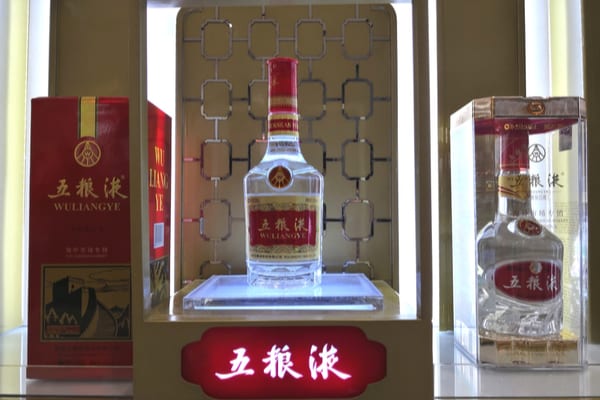Baijiu is rare in the states, though it is available at some cocktail joints around town — usually as a kind of one-off novelty that bartenders stock to impress one another. Though it’s scarce here, baijiu’s billion-strong fan base in China means it’s the best-selling liquor in the world. According to baijiuamerica.com (yes, there is an entire website devoted to it), baijiu is one of the top four spirits distilled world-wide, with over 11 billion liters sold in 2014 alone.
That it’s failed to gain a foothold in the West is not that surprising, actually, if you’ve talked to Americans who have tried it. The most common flavor descriptors are sweaty socks, rotten fruit, or things that are even more foul. Kinder, gentler tasters refer to it as “earthy” or “funky.” In other words, this stuff tastes weird.
It’s also really potent, with an ABV of 40 to 60% (between 80 and 120 proof), and baijiuamerica.com boasts, “Some Call It “firewater” but We Simply Call It By Its Name. Not Everyone Can Handle The Kick.” So don’t think you’re going to down a bottle tonight and be a-okay for that presentation tomorrow.
In English, baijiu — báijiǔ, technically — is most often pronounced as “bye Joe,” but “bye Gio” is closer. “Bah-joo” is also acceptable. It’s usually distilled from fermented sorghum, though other grains can be used as well. While most view it as a single product, the broad range of grain-based liquors within the category can seem unrecognizable from one another, the result of centuries of differing traditions and geographical influence. Unlike popular spirits like Scotch or Bourbon, there’s no official group that regulates baijiu, either. However, there are four main styles adhered to by most producers. These are known as strong aroma, sauce aroma, light aroma, and rice aroma. The styles differ in grain, fermentation and distillation, and even within those classifications, brands showcase signature blending techniques.
Regardless of style, all baijiu is made with qu, a composite of yeast and mold cultivated with grains and formed into cakes or balls. Qu is a cornerstone of Chinese cuisine, used not only to produce rice wine and spirits, but also soy sauce, vinegar and bean paste. Baijiu adheres to traditional methods of production and distilling that have been preserved over centuries.
Like spirits such as gin and tequila, which have different classes, so does baijiu. Broadly, there are six of them, known as “fragrances,” which indicate the spirit’s flavor: honey fragrance, layered fragrance, light fragrance, rice fragrance, sauce fragrance, and thick fragrance. Western palates tend to favor the lighter and sweeter, but sauce fragrance, which is, admittedly, a tough one to get past for beginners, does pair well with pickled snacks.
Orson Salicetti, owner of Lumos in New York and an avid Baijiu fan, even admits, “This is not a spirit you can just pour into a martini glass and enjoy.” Salicetti recommends starting with a baijiu cocktail, then progressing into something like a fig infused baijiu and apple cider — before moving to pours of softer baijiu (he says newbies tend to enjoy the milder rice fragrance), and so on. The trick to enjoying baijiu is embracing its unfamiliar flavor and opening yourself up to the adventure.
—
Photo Credit: Chain898 / Shutterstock.com
